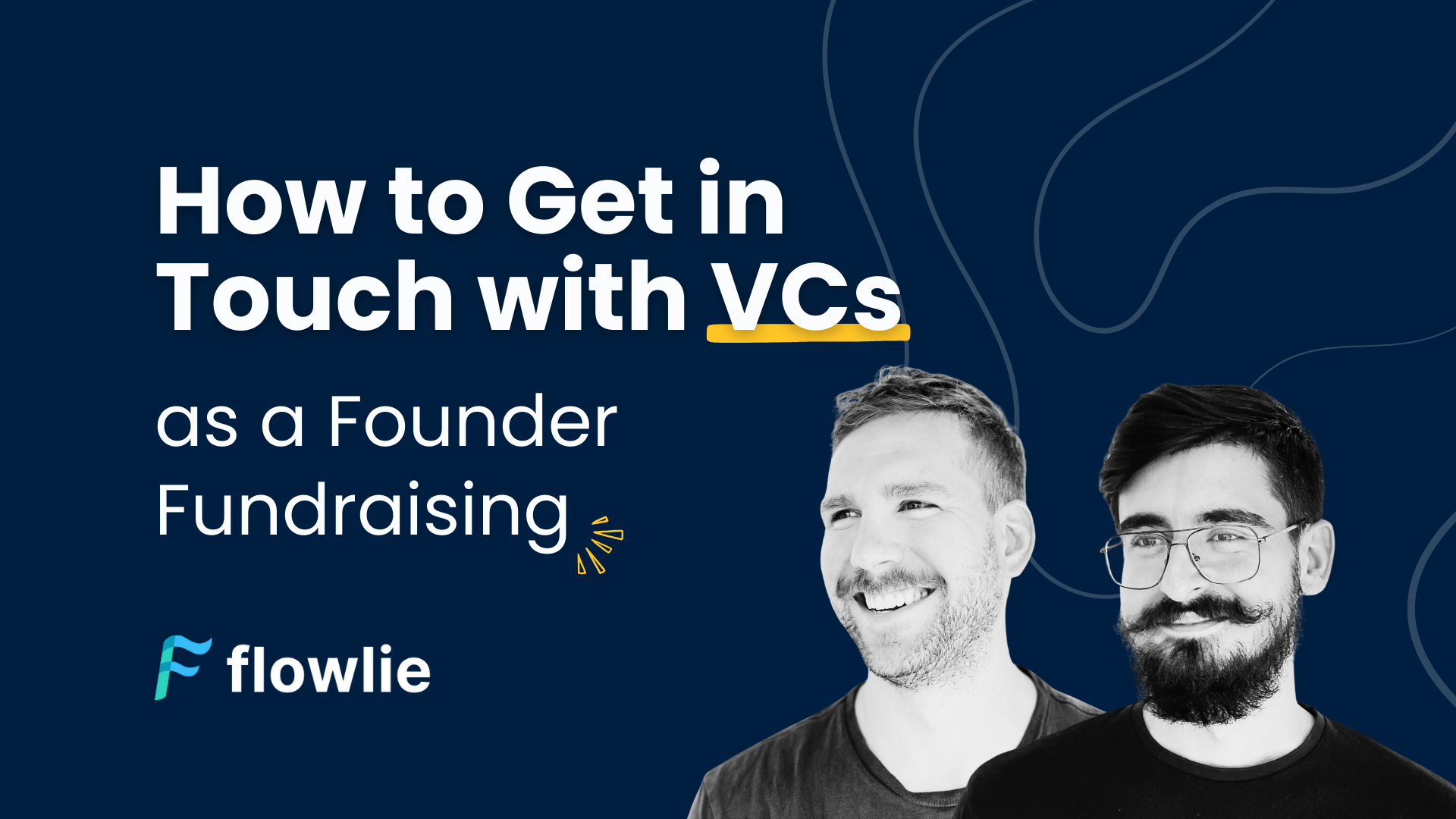
[Guest Post Flowlie] How to get in touch with VCs as a Founder Fundraising
[Guest Post Flowlie] How to get in touch with VCs as a Founder Fundraising
November 2, 2023

Mark Bugas is the co-founder and Chief Revenue Officer of Flowlie, creators of the Fundraising Hub. Already a part of our community, Flowlie assists startups in closing rounds faster. Thousands of founders across 65+ countries have used the Fundraising Hub to raise $330 million. Founders use Flowlie to plan the terms of their round, prepare investment materials, strategize investor outreach, and manage their fundraising. Read the article he has written for founders.
We hear this question all the time: “how do I get in touch with VCs? Is cold outreach ok?” Here’s how we think about prioritizing fundraising outreach.
Warm Intros via Founders in Their Portfolio
VCs expect and look for introductions from talented founders in their portfolio. It’s important to consider how much weight that founder’s reference may carry and how close of a relationship they have. When did that VC invest in them, are they on the board, how has the company performed since then – these are just some of the considerations to understand the strength of the introduction. Even if the founder doesn’t work closely with the VC, as long as the investor admires the founder, this is a great intro path which can get you to the front of the line.
As with any warm intro, the better the founder knows you, the more their weight carries as well. If you decide to reach out cold to a founder in a VC’s portfolio, start by asking for an intro call to hear about their experience with the VC. That gives you an opportunity to build the relationship and for them to get to know you. Then, when messaging the VC about you, they can better sell the lead.
You should have an intro template prepared to save that busy founder’s time. Just make sure to include a personalized line about your relationship, and suggest they adjust it however they see fit.
Warm Intros via Investors Who Invested in Your Company
VCs invest based on “signal”, with a respected investor backing a founder being the greatest signal of all (great blog post on the concept of signal here). Of course, if an investor has passed on you, be careful about accepting intros from them. The first question the target investor will ask is “did you invest?” Not investing is obviously a negative signal, so you should understand that most investors will write the opportunity off from the get-go in this scenario. We’ve made this mistake – it’s not worth your time getting these intros. The only case when that does not hold is when the investor cannot invest in you – such as a friendly Series B investor who wants to help out with your Pre-Seed round.
An investor’s network should be a key consideration for you as a founder. You should make it clear during the vetting process that this is a key value add you look for, and make sure they’re prepared to open their network up for you (and that they have the right network).
Cold Outreach
We hear arguments on both sides: that cold outreach should comprise the majority of your fundraising activity and (more often) that cold outreach is dead. While it’s true it’s harder than ever to reach anyone over email, because there’s so much junk and poorly written copy out there, it’s also easier to stand out from the noise.
There are a lot of good resources for how to write a compelling cold email to an investor (start with YC’s guide), but it boils down to this: be ruthlessly concise. Tear apart your original email until it contains just a few punchy, powerful sentences that convey the key takeaways. Explain what you do with a highly curated one-liner absent of any jargon and then highlight why it’s relevant to them. Do your best to stand out. VCs want dreamers and risk-takers, but they also want to know why you have unique insight and advantages that will make you successful in the pursuit of the impossible.
Personalization is critical, so make sure to do some quick research on Google, LinkedIn, Twitter, and their website so you can personalize the email to that investor. Otherwise, it’s not worth your time. Don’t underestimate how much time this will take – budget time accordingly and don’t shortcut this process, or your results will be poor.
Other Tips:
- Use a CRM or some sort of data tracking system (Airtable, Google Sheets) to keep track of all the investors you are in contact with. Proper planning goes a long way.
- Before seeking warm intros, start with cold outreach so you can hone your pitch with less important leads. It’s pretty obvious to shake off the rust with bad leads, but we’ve made this mistake before.
- Create a drip campaign for your cold outreach to demonstrate progress and insight e.g. don’t just send one email, but send 3-5 touchpoints over a month, not just over email.
- Don’t just email. Engage with the prospect outside of email, for example on social media. Get your brand in front of them any way you can.
- Always lead with an insight that demonstrates your expertise or an update that conveys tangible progress of the business instead of “just following up”, “circling back”, etc. Eliminate empty words and phrases.
- Nothing compares to in-person, so attend events in your target region. All events are not created equal – ask each investor what events they’re attending over the next few months and create an event calendar.
- Systemically track investor outreach, including the status of each conversation, what materials have been sent, and what feedback they’ve given you.
- Start this process well in advance of actually needing the investment. Many founders fundraise year-round, which just means they build relationships before they need anything out of it, when there’s less “pressure” because you’re genuinely getting to know them instead of asking for money.
For more tips, check out our posts on LinkedIn, listen to our bi-weekly podcast The Fundraising Debrief, and contact our team!
This article was written by Mark Bugas, the co-founder and Chief Revenue Officer of Flowlie.
Tag:flowlie, Mark Bugas, VC
